Warships. Cruisers. One step to perfection
The next stage in the development of the Japanese shipbuilding program, and specifically heavy cruisers. From the Myoko to the Mogami and Tone, the path of the Japanese shipbuilders was through the project of heavy cruisers such as the Takao.
Cruisers of the Takao type became a further stage in the development of the Myoko project. When developing the ships, the Japanese ignored the so-called Washington restrictions, therefore, on the one hand, of course, they did not meet the limit of 10 tons, on the other hand, they placed everything they wanted into the ships. Well, almost everything.
But what was wanted in a minimal configuration was enough to make Takao ships the largest Japanese cruisers.
On the one hand, the ships turned out to be very heavily overloaded above the waterline, on the other ... We will talk about displacement later, but about how the designers of Fujimoto and Hirag managed to drive into cruisers, now.
Of course, looking at the photo, one can immediately notice the very massive armored superstructures, more appropriate on the battleship (not of the Fuso type, of course) than on the cruiser. But the matter is not even in the thick armor of add-ons, although for identification they are the very thing.
But let's go in order.
Tacao, Atago, Maya and Chokai.
All four cruisers were laid between April 28, 1927 and April 5, 1931. “Takao” and “Atagi” were built at naval shipyards in Yokosuka and Kura, “Maya” was built by Kawasaki's own factory in Kobe, and “ Chokai "assembled from metal Mitsubishi firm in Nagasaki. By tradition, the ships were named in honor of the highest peaks of the Japanese islands.
At the time of the outbreak of the war, having undergone a number of modernizations, cruisers of the Tacao type had the following characteristics:
- length over the hull: 203,8 m;
- midship-beam width: 20,4 m;
- draft: 6,32 m.
Displacement, of course, varied. The total at Takao and Atago was 15 875 tons, at Maya and Chokai - 13 900 tons. It is clear that the standards prescribed by the Washington Treaty were far away, hence some advantages over the standard "Washington".
As a cruiser power plant, they had 12 canton boilers, four turbo-gear units and four propellers. The power plant capacity is 133 liters. sec., which provided a very good speed - 000 knots. Estimated cruising range with a 34,25-nodal course is 14 nautical miles. The crew of the cruiser consisted of 8500-740 people.
Reservation The thickness of the armor belt of the Tacao cruisers was 127 mm, the thickness of the armored deck was 35 mm (over the EU up to 70-90 mm), and the walls of the superstructure were 10-16 mm. Traverses 75-100 mm, towers 25 mm, barbettes 75 mm. On the whole, it’s very worthy and richer than that of Myoko.
Armament. Here the Japanese designers came off in full.
The main caliber of the Tacao type cruisers was 203-mm guns in five two-gun E-type towers. Three towers were located in the bow, two - in the stern.
The auxiliary caliber was represented by eight 127-mm universal guns in four two-gun towers, two towers on each side.
Flak. 25 automatic cannons of caliber 25 mm in coaxial and built installations, 12 machine guns "Type 96" 13,2 mm in six coaxial installations. In 1944, the cruisers underwent modernization, during which the number of anti-aircraft artillery was significantly increased. At Atago and Takao, the number of 25-mm machine guns was increased to 60 barrels (6x3, 6x2 and 30x1), at Chokai up to 38 (8x2 and 22x1) and at Maya up to 66 (13x3 and 27x1). Plus, each cruiser received from 10 to 13 "sparks" of 13,2 mm machine guns.
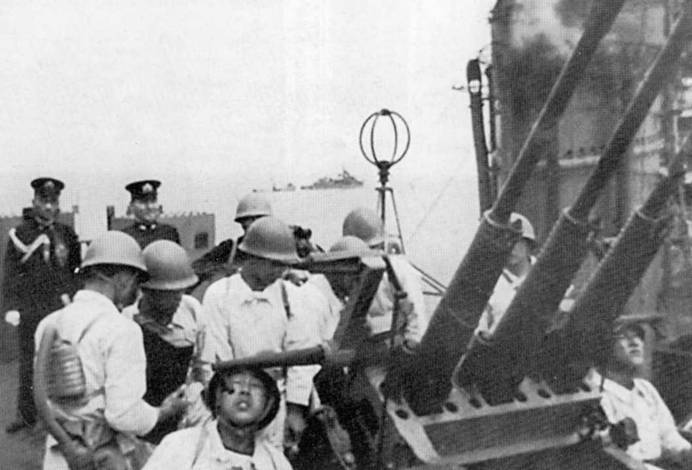
Torpedo weapons. Initially, twin TAs were installed on the cruisers, but in the course of improvements, four 610 mm torpedo tubes were installed on the sides, two on each side. Ammunition for torpedoes was 24 pieces, 16 in the vehicles and another 8 in a special lightly armored storage.
It’s unusual for cruisers, all the more difficult, but since 1942 each cruiser has carried deep bombs! At the stern of the ships guides were mounted for dropping, and each ship took on board another 24 depth charges.
Each cruiser was equipped with two aviation powder catapults, the air group consisted of three seaplanes.
The armament of the ships was more than impressive. Yes, there was a place to overload, but it was clearly worth it.
It is worth noting that for the Tacao type cruisers, for the first time, 203 mm / 50 Type 3 main guns No. 2 were used. The elevation angle of the main guns increased to 70 °, which in theory allowed them to be fired at by aircraft. Hence a slight decrease in the barrels of universal artillery and an attempt to compensate for the decrease in 127-mm guns with 25 mm automatic weapons.
Compared to the Myoko, the Takao cruisers were simply floating hotels in terms of crew accommodation.
The cockpits of ordinary composition were located on the lower deck in the stern, as well as on the middle deck from the stern to the chimney area of the first and second boiler rooms.
Officers' cabins were concentrated in the bow on the lower and middle decks, there was also a cabin-campaign.
Due to the smaller crew size and the transfer of torpedo tubes to the upper deck, the living quarters were significantly more spacious than on the Myoko. But in addition to a simple increase in living space, the number of fans (up to 66 pieces), providing an influx of fresh air to the casemates, was significantly increased, and air conditioning began to be supplied not only to the towers and ammunition cellars, but also to the ship control posts.
The ships had fairly extensive storage rooms for rice and wheat, guaranteeing autonomy, and even a special freezer for meat and fish with a volume of 67 cubic meters.
Galleys and infirmaries were separate for officers and sailors, baths for sailors, non-commissioned officers and officers were separate too!
In general, it turned out that the Japanese can build not only fast and strong ships, but also relatively comfortable. Compared to Furutaki and Myoko, they are luxurious.
Combat service.
All four cruisers went into operation from March 30, 1932 to June 30, 1932. They were assigned to the 4th Division of the 2nd fleet. There they changed just the same “Meko”. And from 1932 to the beginning of World War II, cruisers took part in the maneuvers, campaigns and shows of the Imperial Japanese Navy.
Ships entered the war after passing a series of modernizations that changed both the appearance and power of the ships.
In September 1941, all four cruisers were assigned to the battleships “Congo” and “Haruna” of the 3rd Division, thereby forming the core of the Southern forces commanded by Admiral Kondo.
The Kondo fleet provided long-range cover for operations in Malaya and Borneo. Having captured Malaya, the compound fought in the area of Australia and the islands of Sumatra and Java, after which the Takao and Maya went to Yokosuka for repairs, during which the latest 127-mm universal guns in two-gun towers were installed on the ships.
Further, the cruisers took part in the operation near the Aleutian Islands, the purpose of which was to divert the attention of American forces from Midway. It turned out so-so.
The Chokai successfully participated in the battle off the island of Savo, and the other three cruisers were noted in the battle off the island of Guadalcanal. Takao, Atago, and Maya, along with the ships of the 5th Division, Myoko and Haguro, joined Admiral Nagumo’s aircraft carrier group.
This Japanese fleet converged in battle with the American formation TF-61 at the battle of the Solomon Islands. All five Japanese heavy cruisers took part in a night battle with American ships, and at the end of the Battle of Santa Cruz they took part in the sinking of the Hornst aircraft carrier.
On the night of November 14–15, 1942, the cruisers Takao and Atago, together with the old battleship Kirishima, as well as destroyers, were sent to fire at Henderson Field airfield.
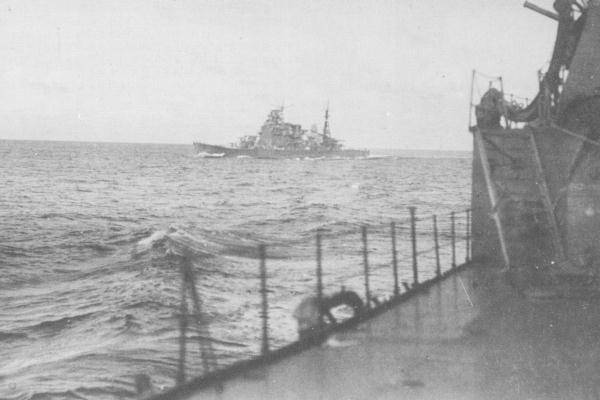
However, the Japanese were not lucky. The connection ran into the American battleships South Dakota and Washington. Both American ships concentrated fire on the Japanese battleship "Kirishima", enabling both Japanese cruisers to fire the main caliber without interference.
At least 16 HE shells of 203 mm caliber, fired from a distance of just 5 km by both Japanese cruisers, then hit the South Dakota. In that battle, Takao was not injured at all, and Atago received moderate injuries. On "Kirishima" the same fire broke out, later the battleship sank. "South Dakota" left the scene of the battle on its own, which indicates not the most severe damage.
Further, the cruisers took part in the evacuation of the garrison of Guadalcanal, operations in the area of the Envetok Atoll, the battle of the Mariana Islands.
Well, the last big battle was the battle in Leyte Gulf.
October 22, 1944 four cruisers passed through the Palawan Strait. So for them the naval battle in Leyte Gulf began.
On October 23, two torpedoes fired by the American submarine Darter hit the Tacao. Through the holes made on board by the explosion of torpedoes, large quantities of water began to flow into the cruiser’s boiler rooms. Explosions also damaged starboard steering and propellers. The ship started a fire, the cruiser received a roll of 10 degrees.
It was possible to level the cruiser by flooding the compartments of the opposite side, but now the Tacao was too low in the water. It was possible to extinguish the fire, after which the Takao, accompanied by two destroyers, crawled to Brunei.
The crew of the submarine "Darter" did not calm down and continued the topic, dropping four torpedoes into the cruiser "Atago". After a while, the cruiser sank.
Around the same time, another submarine of the United States Navy, the Day, attacked the Maya cruiser, firing four torpedoes from its bow torpedo tubes. Torpedoes hit the port side of the cruiser, which sank.
On October 25, the Chokai cruiser was heavily damaged by a bomb dropped by TVM-1. The damage was so serious that the cruiser had to finish off with torpedoes due to the inability to tow.
The heavily damaged Takao was the only cruiser to survive the battle in Leyte Gulf. The Takao safely reached first Brunei, and then Singapore, where it joined the 1st Southern Expeditionary Fleet along with the cruisers Mioko, Ashigara and Haguro.
They didn’t begin to repair Takao, along with the damaged Mioko, it was flooded on a sandbank and used as an anti-aircraft battery, since the air defense barrels were more than enough.
Unaware of the real state of the cruisers, the British sent two ultra-small submarines to destroy them, which on July 31, 1945 attempted to attack the ships. By mistake, both submarines approached the side of one ship ...
Tacao is out of luck. Each mini-submarine carried a subversive charge weighing 1 ton and six 35-kg “sticky” mines. Subversive charges for some reason did not explode, but sticky mines made a significant hole in the hull.
Strange, but the cruiser flooded in shallow water refused to sink further. And finally the cruiser was flooded in the Strait of Malaisk by the British after the end of hostilities - October 27, 1946
Cruisers of the Tacao type were a development of the Myoko type. Changes in the design of Tacao relative to Myoko were both positive and negative.
“Takao” had an armored belt of a much larger area, and much better protection of the cellars with ammunition, both vertical and horizontal. New rotary torpedo tubes with faster torpedoes instead of stationary twin-tube ones on the lower deck. More decent conditions for the crew. No wonder the Japanese admirals gladly appointed Tacao-class cruisers as flagships.
Of course, there were cons.
New add-ons, rather bulky, increased windage and top weight. But still, the add-in was very useful, and the placement of all control posts in it, and under good armor, nevertheless outweighed the windage.
This is not to say that the new 203 mm guns were successful. They had worse accuracy than those that carried the Myoko, and the fact that they could fire on air targets in principle deprived the cruisers of a pair of useful 127 mm universal guns.
It is clear that the main problem was the overload of ships. And the displacement increased to 15 tons slightly reduced the maximum speed. Although, thanks to a successful power plant, the speed was already quite decent (000 knots).
But, in my opinion, the extremely weak anti-torpedo protection became the main weakness of Takao-class cruisers. The fact that ships are very vulnerable to torpedoes predetermined their end.
However, Takao, Atago, Maya and Chokai quite clearly demonstrated that with their development and construction Japanese shipbuilders reached a new level. And to the top there was very little.
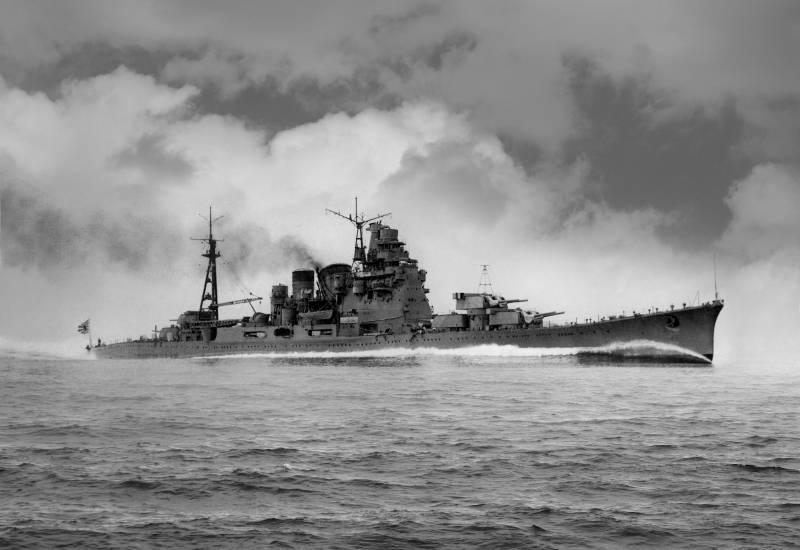
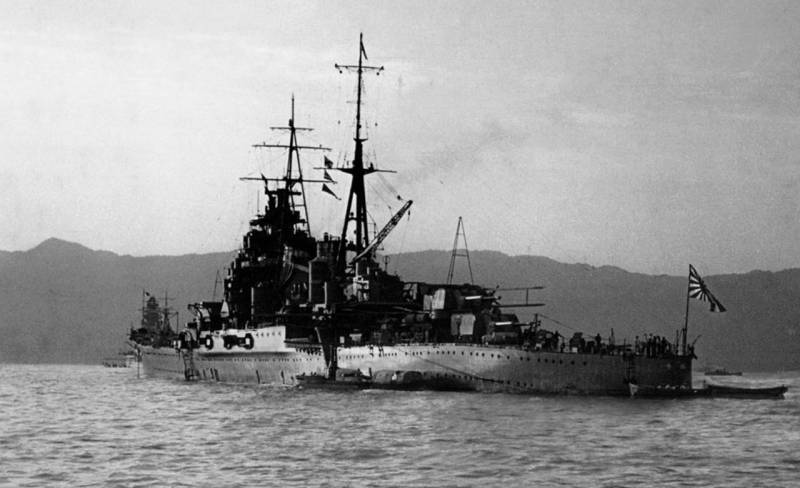
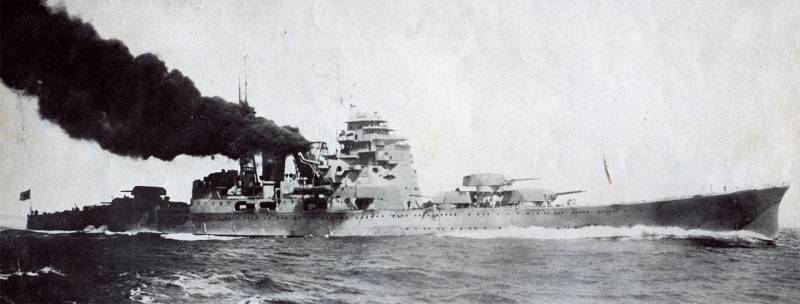
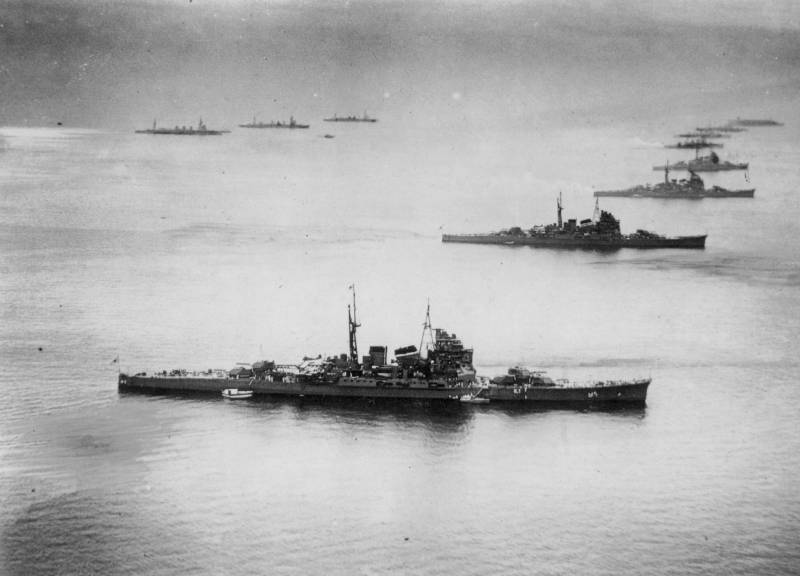
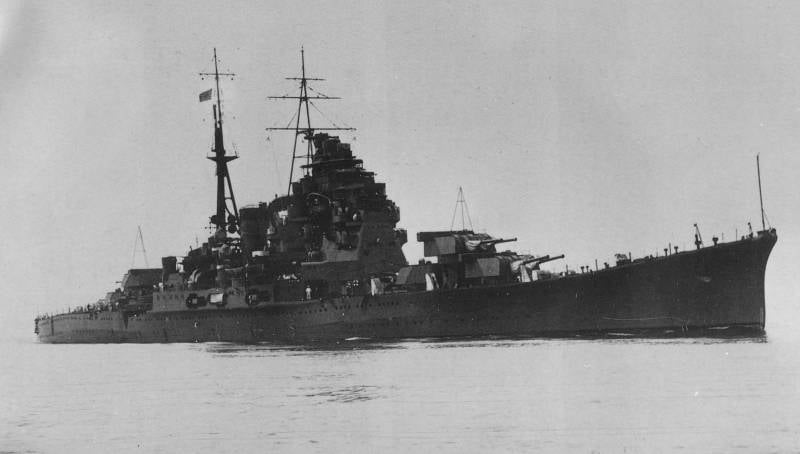
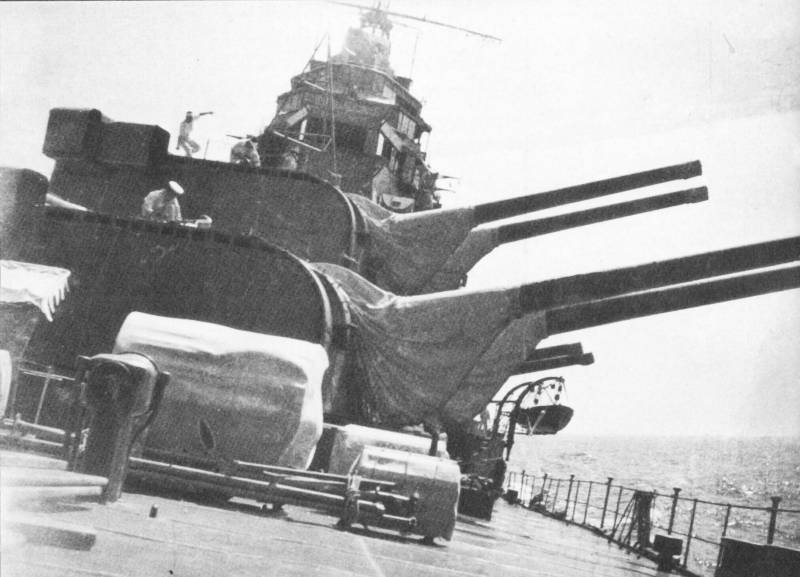
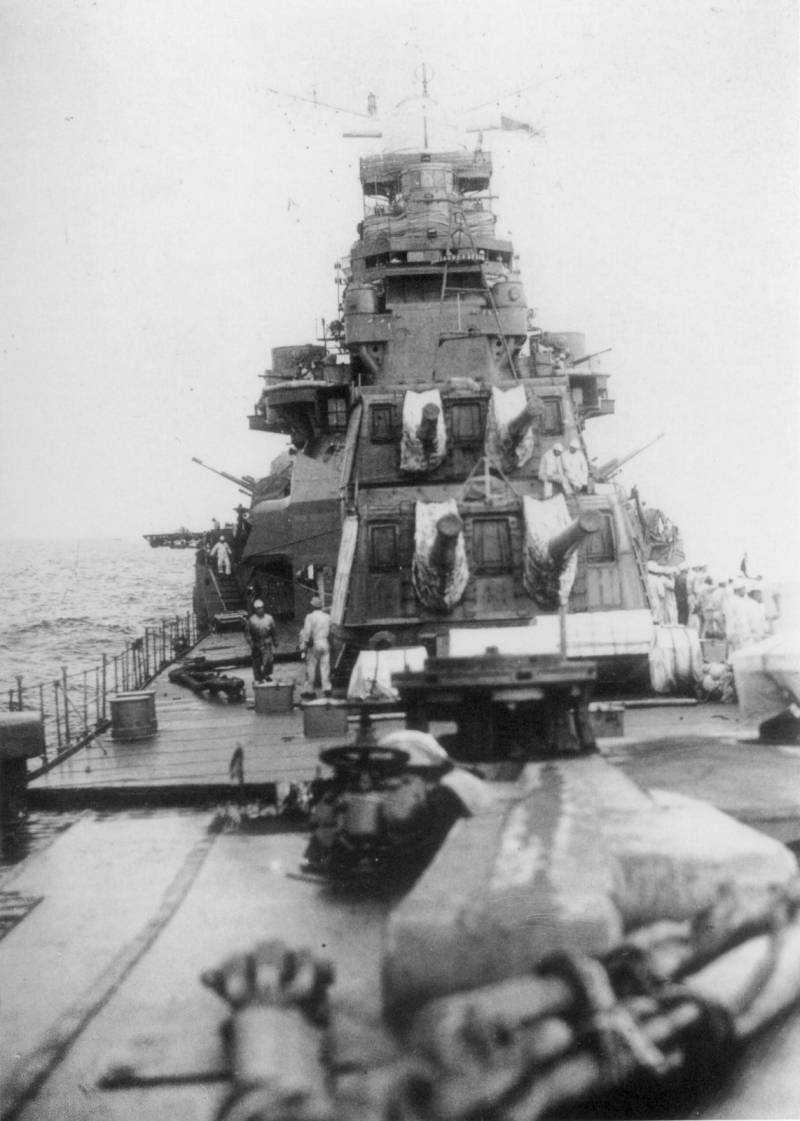
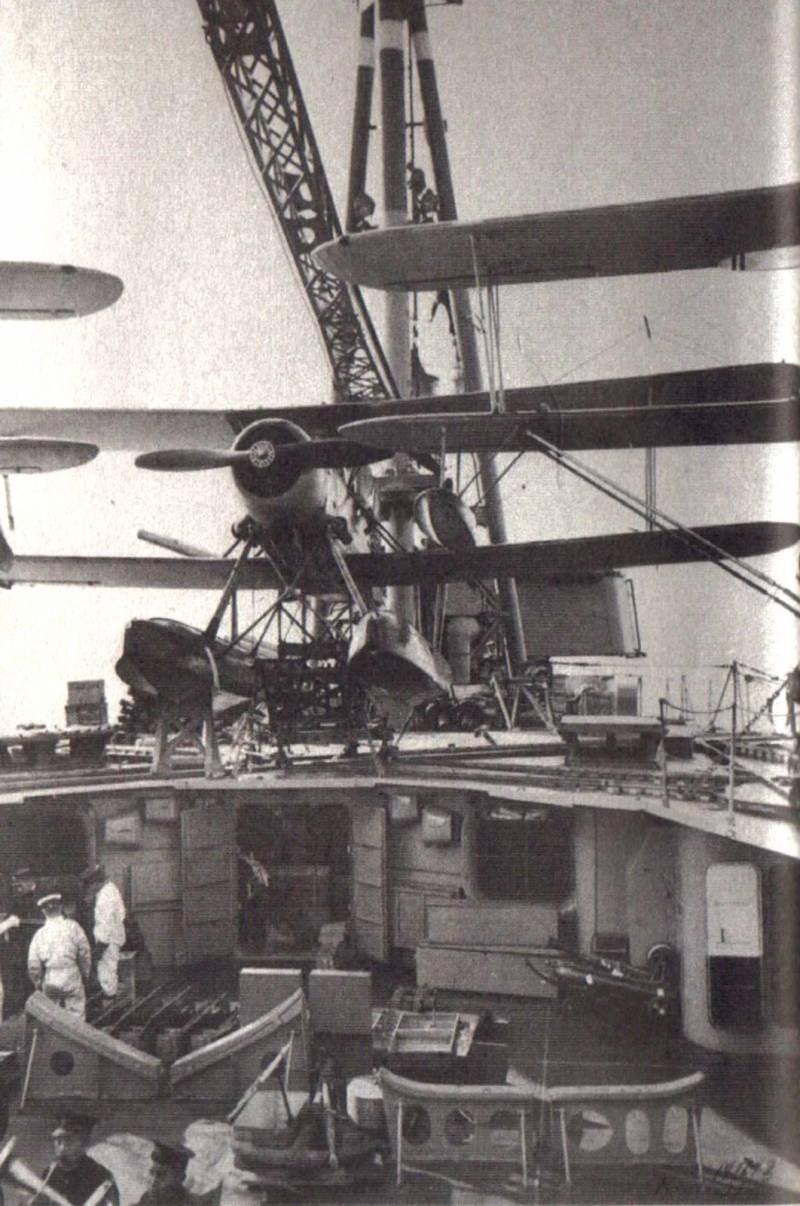
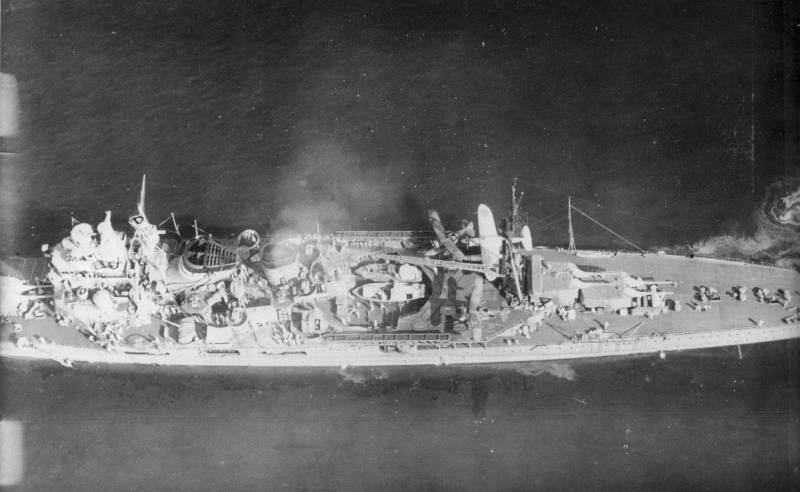
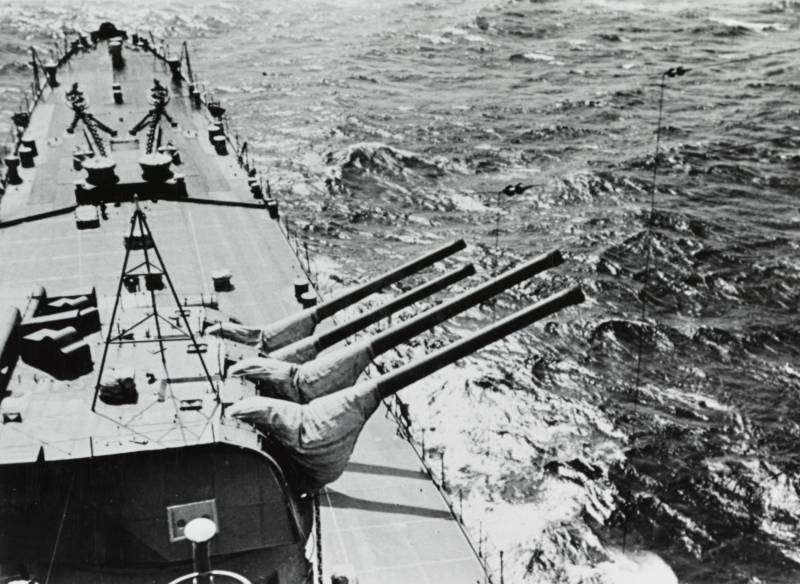
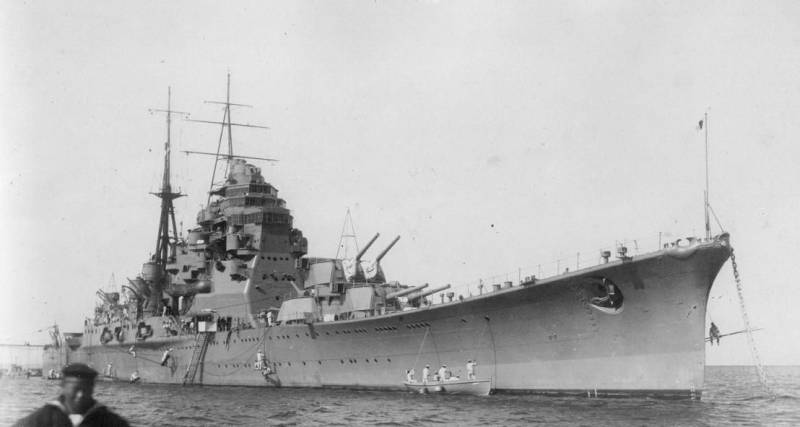
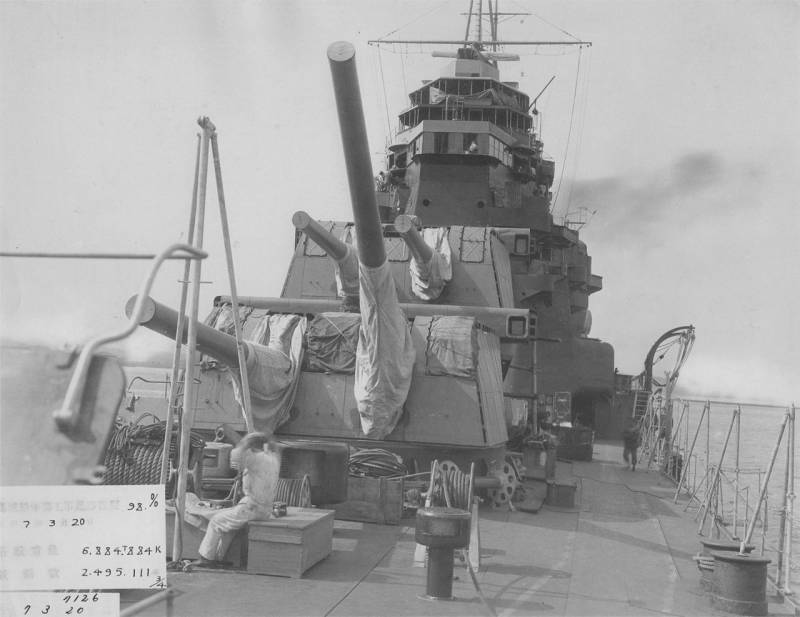
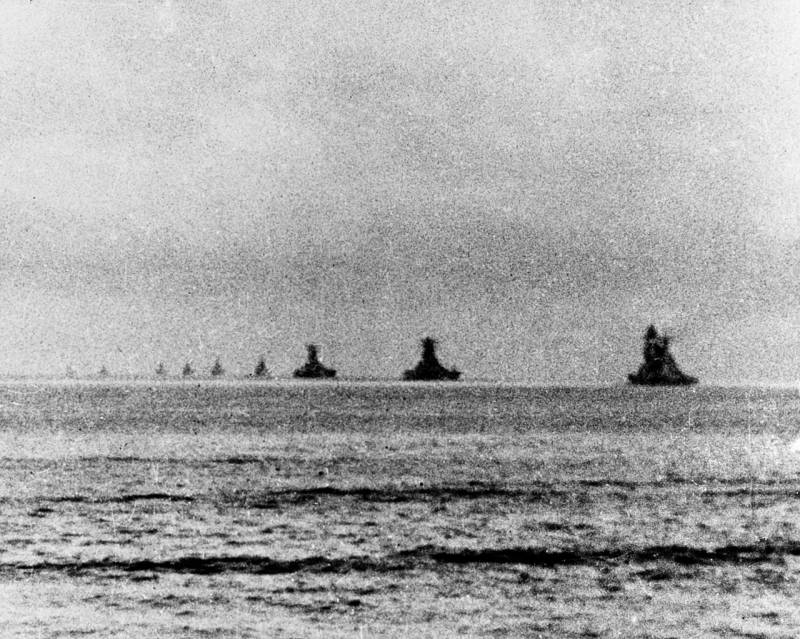
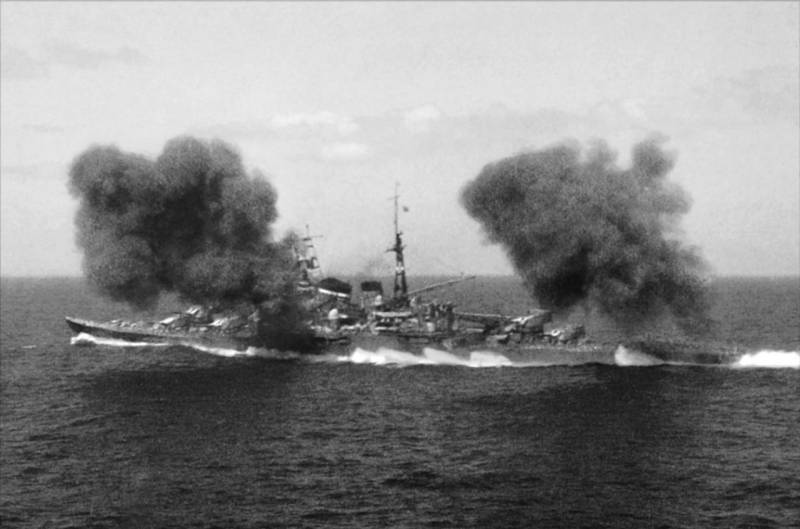
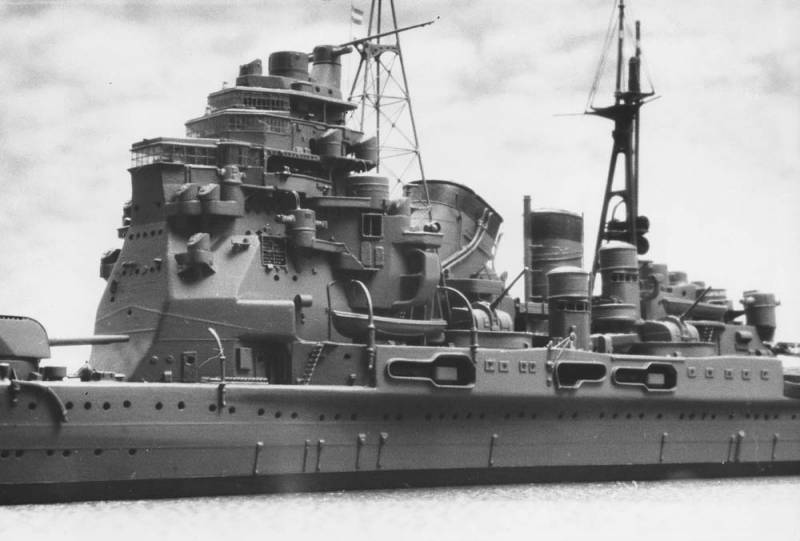
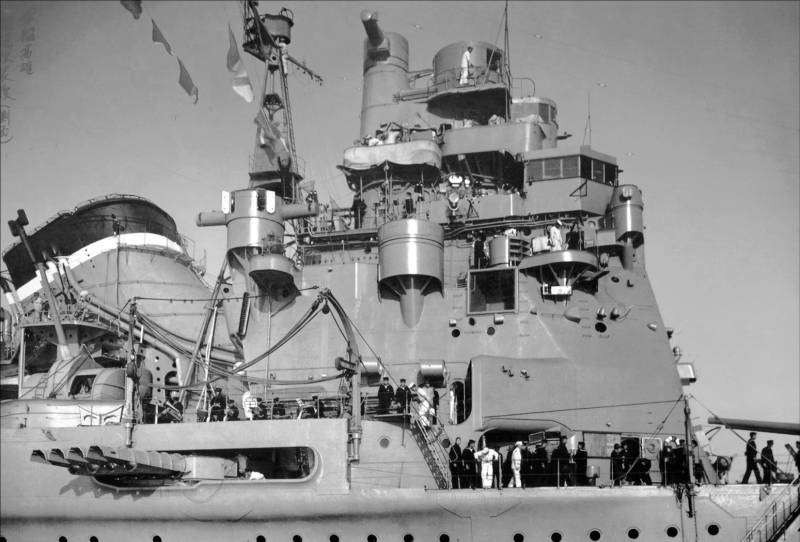
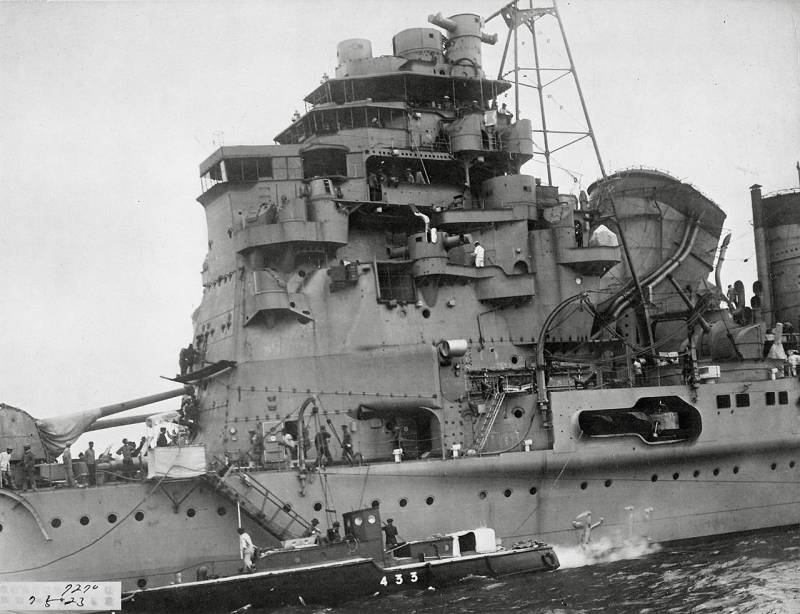
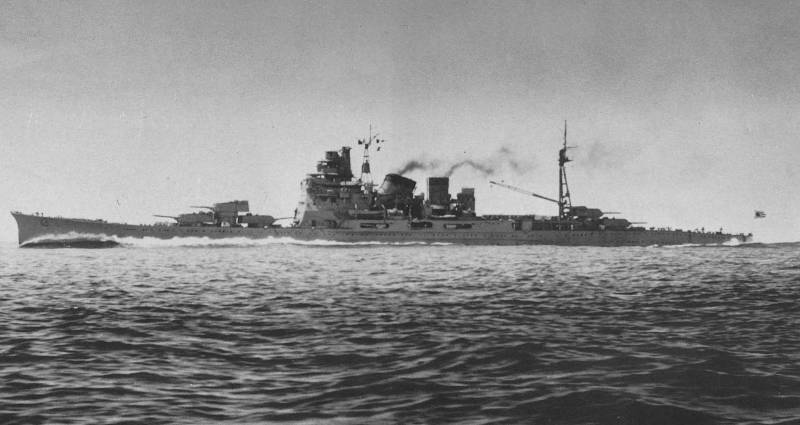
Information